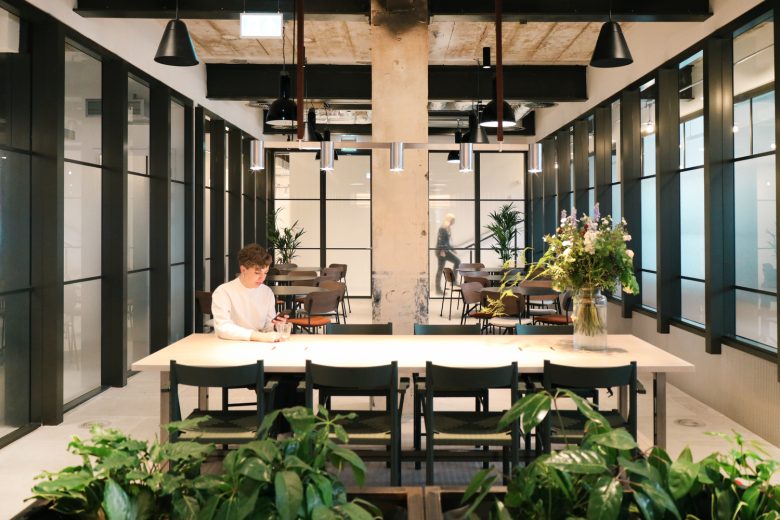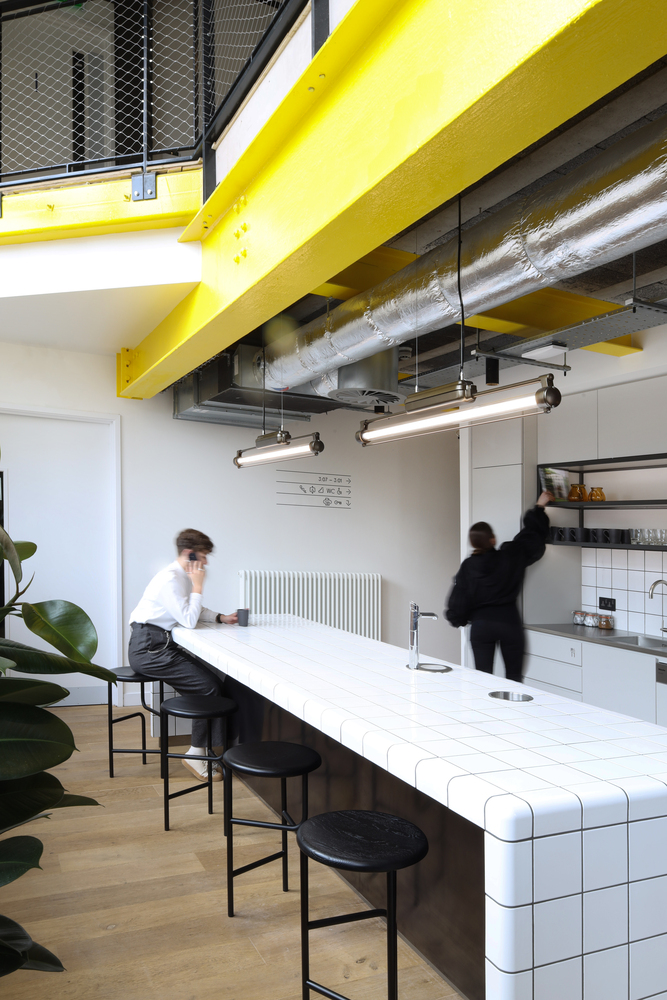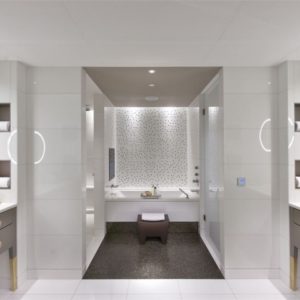

MoreySmith has unveiled the transformation of the Grade II listed Generator Building in Bristol, creating a premium flexible workspace for office operators, Clockwise. The London-based architecture and design studio were commissioned for the project to create a workspace that prioritizes wellbeing and reflects the rich history of the building.
Located at the heart of Bristol’s historic Waterfront Quarter, the landmark building first opened in 1899 and was once home to the generator that powered the city’s tram system. MoreySmith collaborated with The Bush Consultancy to ensure that the design embodied the building’s rich history with the original architecture remaining visible on every floor. The location spans over six floors and 30,611 sq ft, with a range of design-led spaces for Clockwise members to work from including dedicated offices, private desks, and co-working areas, as well as a double-height breakout space.
In order to reimagine the space for modern use, new interior elements have been sensitively added to the building while leaving the building’s core structure uncompromised. On the fifth floor, pod structures have been introduced between existing trusses to maximize volume and to create mezzanine office spaces with large porthole windows offering views across the waterways below.
Features from the original use of the building can be seen throughout, including original numbers stenciled on the glazed brickwork that previously labeled the usage of each machine and two-period trusses. The original tiled brick façade has also been maintained with aged copper cladding used to reference the rusted metal objects found in the Generator Building.
MoreySmith looked to elevate the industrial features of the architecture by including corrugated metal, mosaic floors, and reclaimed industrial lighting as design features and interventions. A bar for events and daily refreshments is new to the space, featuring a bespoke overhead light installation formed of prismatic acrylic inspired by the flow of electricity. A club lounge sits adjacent to the bar to activate the street presence of the building and to serve as a café area that is open for the wider public to enjoy.
Featuring bright, airy double-height spaces, natural light has been prioritized throughout with high ceilings and features that provide views of the waterways to provide a soothing element to the space. This is juxtaposed with repurposed marble terrazzo adding modern accents to the buildings existing features, with contemporary furnishing and an abundance of planting to provide visual access to nature.
The talent and history of the local community can be seen throughout, with artwork from local artists and nods to the building’s industrial past and waterside setting with subtle nautical references including rope light installations. The once derelict building has now been transformed by the inventive design to bring new life to Bristol’s harbor for its thriving community of creatives, entrepreneurs, and start-ups.
Architects: MoreySmith
Design Concept & Detailing: Michael Kieck
Concept & Client Liaison: Andrew McCann
Overall Design Direction: Linda Morey-Burrows
Photographs: Fiona Smallshaw













Add to collection










